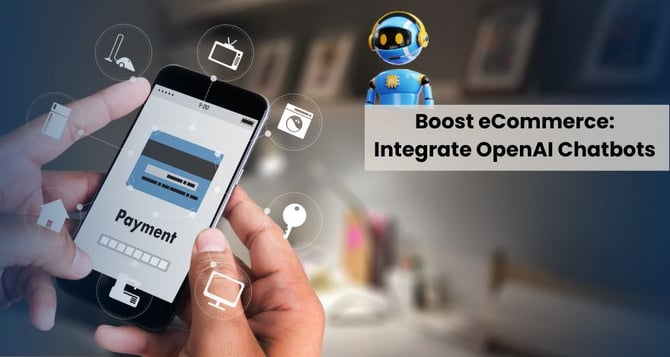Boost eCommerce: Integrate OpenAI Chatbots for Engaging Experience
Enhance your eCommerce site with OpenAI chatbots for real-time, AI-driven support, improving customer satisfaction and potentially boosting sales. Regularly refining bot skills and prioritizing security drives business growth in today's tech-centric world.

In today's digital era, customer service plays a pivotal role in the success of eCommerce websites. Visitors expect quick responses to their queries and assistance throughout their shopping journey. To enhance customer experience and streamline support, integrating OpenAI chatbots into your eCommerce website can be a game-changer.
OpenAI chatbots, driven by advanced natural language processing (NLP) models like LLM Development, excel in understanding and responding to user queries effectively.
In this article, we will explore how to integrate OpenAI chatbots into your eCommerce website with code snippets.
Prerequisites
Before we dive into the integration, ensure you have the following prerequisites in place:
- OpenAI API Access: You'll need access to the OpenAI API. Sign up on the [OpenAI website](https://beta.openai.com/signup/) to obtain your API key.
- Programming Knowledge: Familiarity with HTML, CSS, and JavaScript is essential for integrating the chatbot into your website.
- Server: You'll need a server to handle API requests and responses. You can use any server-side language, such as Node.js, Python, or Ruby.
Step 1: Create an OpenAI Chatbot
First, create an OpenAI chatbot model using the OpenAI API Integration. You can use the OpenAI GPT-3 model for this purpose. Here's a code snippet in Python to create a chatbot instance:

Step 2: Create a Chat Interface
Now, let's create a chat interface in HTML and CSS. This interface will allow users to interact with the chatbot.
Here's a basic example:

Step 3: Implement JavaScript
Create a JavaScript file (`script.js`) to handle user interactions and chatbot responses. You'll need to make AJAX requests to the server for chatbot responses.
Below is a simplified example:

Step 4: Create a Server
Set up a server (e.g., using Node.js and Express) to handle incoming user messages and communicate with the OpenAI chatbot.
Below is a simplified example:

Step 5: Make OpenAI API Requests
Inside the server's `/api/chatbot` route, make an OpenAI API request with the user's message and send back the chatbot's response. Use the code from Step 1 to interact with the OpenAI API and retrieve the chatbot's reply.
Step 6: Styling and Enhancements
Customize the CSS (referenced in the HTML) to style your chat interface to match your eCommerce website's design. You can also add features like user authentication, user history, and error handling for a complete and robust chatbot experience.
Ready to Elevate Your Customer Service?
Experience real-time support with AI-driven chatbots. Let's revolutionize your customer experience today!
Conclusion
Integrating OpenAI chatbots in your eCommerce site enables real-time, AI-driven support, enhancing satisfaction and potentially increasing sales. Continuously improving their skills based on interactions and ensuring strong security transforms customer service, driving business growth in today's tech-driven landscape.


%201-1.webp)


.png?width=344&height=101&name=Mask%20group%20(5).png)








.png?width=352&name=Enhancing%20Website%20Search%20with%20Natural%20Language%20Queries%20(1).png)







